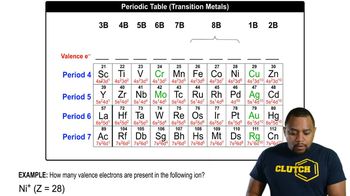Draw a Lewis Structure for each species.
a. N2H4
b. N2H2
c. (CH3)2NH2Cl
d. CH3CN
 Verified step by step guidance
Verified step by step guidance Verified video answer for a similar problem:
Verified video answer for a similar problem:



 6:06m
6:06mMaster How to interpret condensed structures. with a bite sized video explanation from Johnny
Start learning